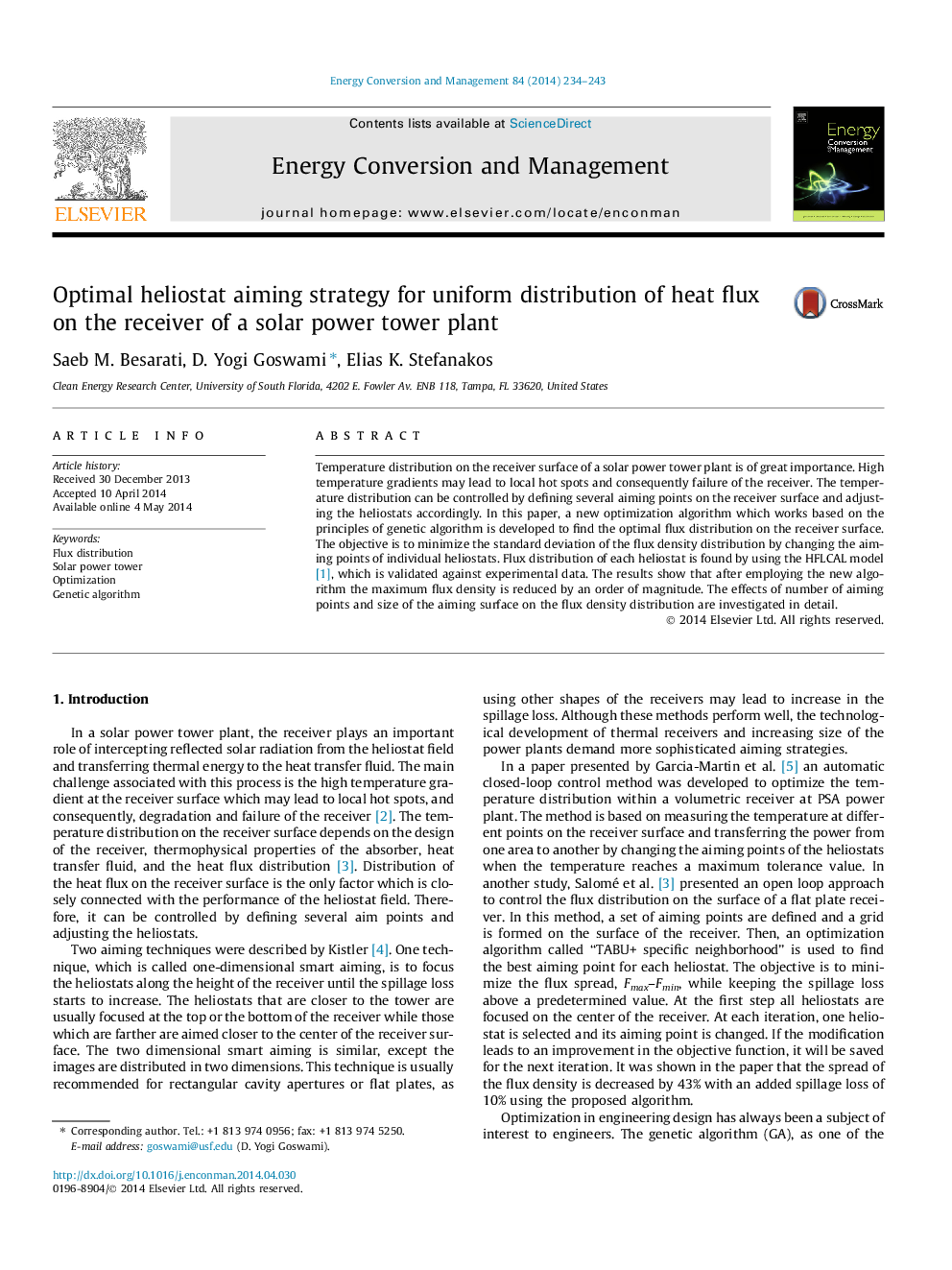| Article ID | Journal | Published Year | Pages | File Type |
|---|---|---|---|---|
| 763851 | Energy Conversion and Management | 2014 | 10 Pages |
•The HFLCAL method is used to find the flux distribution of individual heliostats.•An optimization algorithm is developed based on the principles of genetic algorithm.•The objective is to minimize the standard deviation of flux density distribution.•The optimization algorithm finds which heliostats should aim at which point.•By using the new algorithm the maximum flux is reduced by an order of magnitude.
Temperature distribution on the receiver surface of a solar power tower plant is of great importance. High temperature gradients may lead to local hot spots and consequently failure of the receiver. The temperature distribution can be controlled by defining several aiming points on the receiver surface and adjusting the heliostats accordingly. In this paper, a new optimization algorithm which works based on the principles of genetic algorithm is developed to find the optimal flux distribution on the receiver surface. The objective is to minimize the standard deviation of the flux density distribution by changing the aiming points of individual heliostats. Flux distribution of each heliostat is found by using the HFLCAL model [1], which is validated against experimental data. The results show that after employing the new algorithm the maximum flux density is reduced by an order of magnitude. The effects of number of aiming points and size of the aiming surface on the flux density distribution are investigated in detail.
